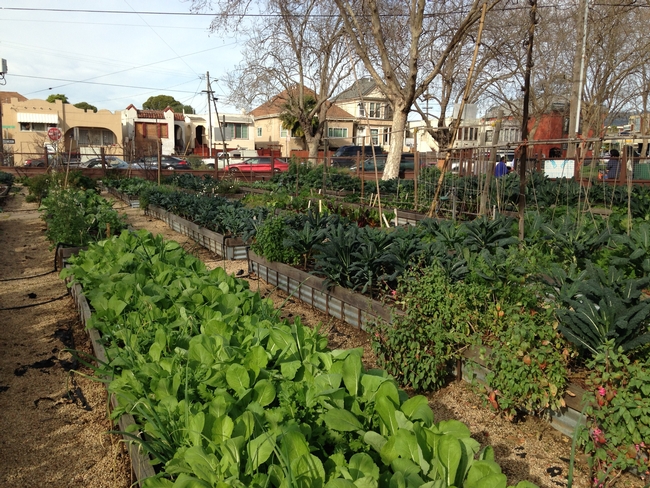Posts Tagged: Shermain Hardesty
How can ANR support urban farming in California?
Here in California, the top agricultural producer in the nation, people too often go hungry. Fifteen percent of California households (roughly 5.5 million Californians) are “food insecure,” according to a 2013 USDA report, meaning they do not have “consistent access throughout the year to adequate food for healthy, active living,” according to Rachel Surls, UC Cooperative Extension advisor in Los Angeles County. Families with children are even more likely to run short on food.
Urban agriculture is one tool that has the potential to improve food security in California communities.
To better support the state's urban agriculture, a statewide assessment of urban agriculture needs was conducted by Surls, Gail Feenstra, deputy director of Sustainable Agriculture Research and Education Program (SAREP); Sheila Golden, former SAREP staff member who now works for Community Alliance with Family Farmers; Ryan Galt, professor in the Department of Human and Community Development; Shermain Hardesty, UC Cooperative Extension specialist in the Department of Agricultural and Resource Economics; Cheryl Wilen, UC Cooperative Extension advisor in San Diego County; Claire Napawan, professor in the Department of Human Ecology; Valerie Borel, horticulture and natural resources program coordinator in Los Angeles County; Aziz Baameur, UC Cooperative Extension advisor in Santa Clara County; and Rob Bennaton, UC Cooperative Extension advisor in Contra Costa and Alameda counties.
The team conducted a survey of ANR personnel and interviewed urban farmers and policymakers.
They found that 65 percent of ANR academics and staff responding to the survey said that they had provided support, advice, technical assistance or served as a partner for urban agriculture activities within the past year.
ANR personnel said they would like to see educational materials developed specifically for urban agriculture on a number of topics, including pest management, water management, design of community projects, soil testing and remediation and tips for projects at schools.
Their study has been published in the February issue of Renewable Agriculture and Food Systems, a special issue on urban agriculture.
To read the full report, you can also view it at http://ucanr.edu/sites/UrbanAg/files/188371.pdf.

